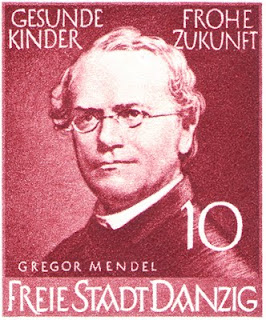Gregor Johann Mendel was born into an ethnic German family in Heinzendorf bei Odrau, Austrian Silesia, Austrian Empire (now Hynčice, Czech Republic), and was baptized two days later as Johann. He was the son of Anton and Rosine (Schwirtlich) Mendel, and had one older sister (Veronica) and one younger (Theresia). They lived and worked on a farm which had been owned by the Gregor Johann Mendel family for at least 130 years. During his childhood, Gregor Johann Mendel worked as a gardener, studied beekeeping, and as a young man attended Gymnasium (school) in Opava. Later, from 1840 to 1843, he studied practical and theoretical philosophy as well as physics at the University of Olomouc Faculty of Philosophy, taking a year off through illness. When Gregor Johann Mendel entered the Faculty of Philosophy, the Department of Natural History and Agriculture was headed by Johann Karl Nestler, who conducted extensive research of hereditary traits of plants and animals, especially sheep. In 1843 Gregor Johann Mendel began his training as a priest. Upon recommendation of his physics teacher Friedrich Franz, he entered the Augustinian Abbey of St Thomas in Brno in 1843. Born Johann Mendel, he took the name Gregor Johann Mendel upon entering religious life. In 1851 he was sent to the University of Vienna to study under the sponsorship of Abbot C. F. Napp. At Vienna, his professor of physics was Christian Doppler. Gregor Johann Mendel returned to his abbey in 1853 as a teacher, principally of physics, and by 1867, he had replaced Napp as abbot of the monastery.
Besides his work on plant breeding while at St Thomas's Abbey, Gregor Johann Mendel also bred bees in a bee house that was built for him, using bee hives that he designed. He also studied astronomy and meteorology, founding the 'Austrian Meteorological Society' in 1865.The majority of his published works were related to meteorology.












No comments:
Post a Comment